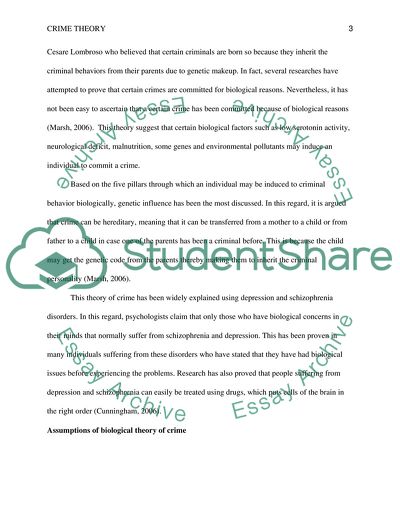Cite this document
(Theories of Crime Paper for Criminal Justice Class Coursework Example | Topics and Well Written Essays - 2250 words, n.d.)
Theories of Crime Paper for Criminal Justice Class Coursework Example | Topics and Well Written Essays - 2250 words. https://studentshare.org/sociology/1799288-theories-of-crime-paper-for-criminal-justice-class
Theories of Crime Paper for Criminal Justice Class Coursework Example | Topics and Well Written Essays - 2250 words. https://studentshare.org/sociology/1799288-theories-of-crime-paper-for-criminal-justice-class
(Theories of Crime Paper for Criminal Justice Class Coursework Example | Topics and Well Written Essays - 2250 Words)
Theories of Crime Paper for Criminal Justice Class Coursework Example | Topics and Well Written Essays - 2250 Words. https://studentshare.org/sociology/1799288-theories-of-crime-paper-for-criminal-justice-class.
Theories of Crime Paper for Criminal Justice Class Coursework Example | Topics and Well Written Essays - 2250 Words. https://studentshare.org/sociology/1799288-theories-of-crime-paper-for-criminal-justice-class.
“Theories of Crime Paper for Criminal Justice Class Coursework Example | Topics and Well Written Essays - 2250 Words”. https://studentshare.org/sociology/1799288-theories-of-crime-paper-for-criminal-justice-class.


